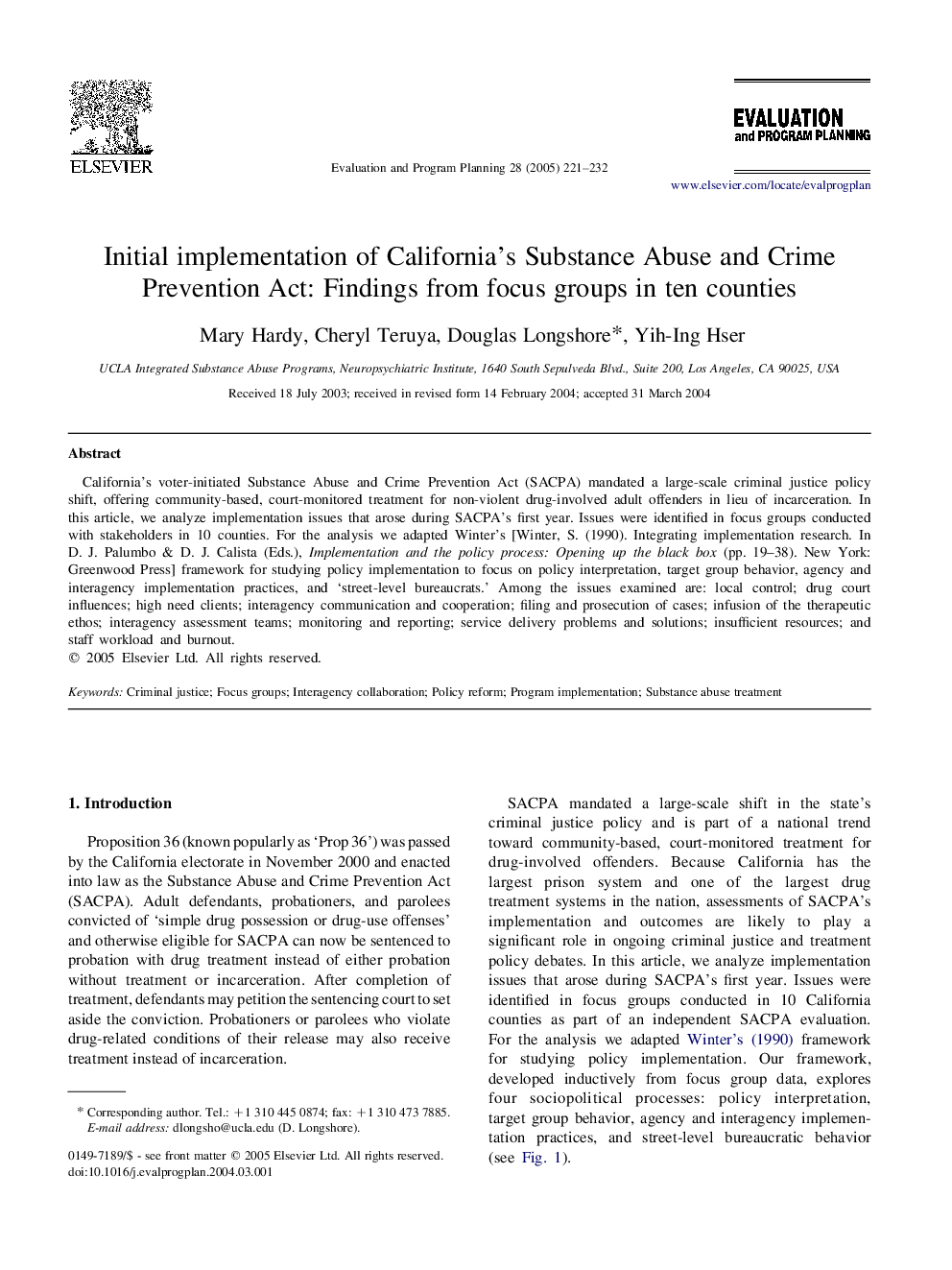| Article ID | Journal | Published Year | Pages | File Type |
|---|---|---|---|---|
| 10299804 | Evaluation and Program Planning | 2005 | 12 Pages |
Abstract
California's voter-initiated Substance Abuse and Crime Prevention Act (SACPA) mandated a large-scale criminal justice policy shift, offering community-based, court-monitored treatment for non-violent drug-involved adult offenders in lieu of incarceration. In this article, we analyze implementation issues that arose during SACPA's first year. Issues were identified in focus groups conducted with stakeholders in 10 counties. For the analysis we adapted Winter's [Winter, S. (1990). Integrating implementation research. In D. J. Palumbo & D. J. Calista (Eds.), Implementation and the policy process: Opening up the black box (pp. 19-38). New York: Greenwood Press] framework for studying policy implementation to focus on policy interpretation, target group behavior, agency and interagency implementation practices, and 'street-level bureaucrats.' Among the issues examined are: local control; drug court influences; high need clients; interagency communication and cooperation; filing and prosecution of cases; infusion of the therapeutic ethos; interagency assessment teams; monitoring and reporting; service delivery problems and solutions; insufficient resources; and staff workload and burnout.
Keywords
Related Topics
Health Sciences
Medicine and Dentistry
Public Health and Health Policy
Authors
Mary Hardy, Cheryl Teruya, Douglas Longshore, Yih-Ing Hser,
